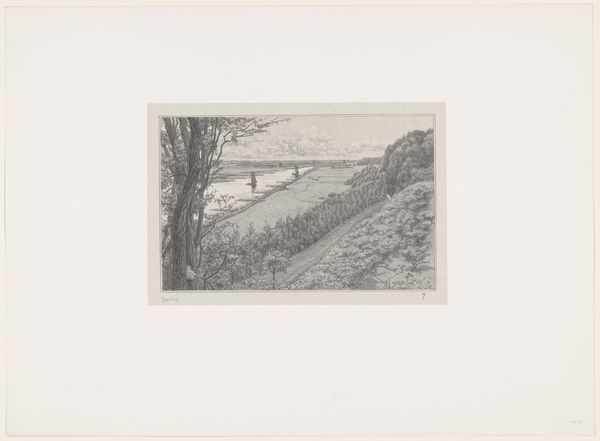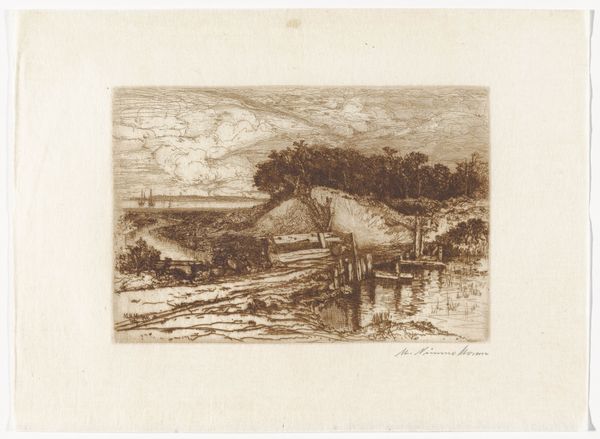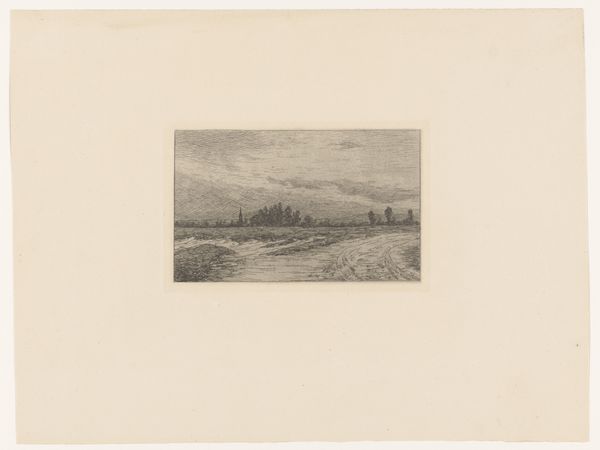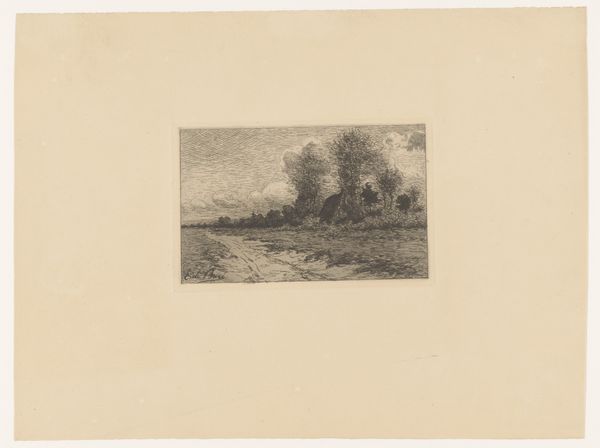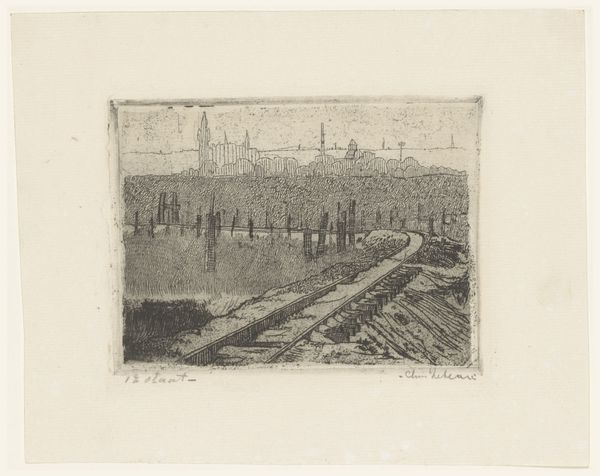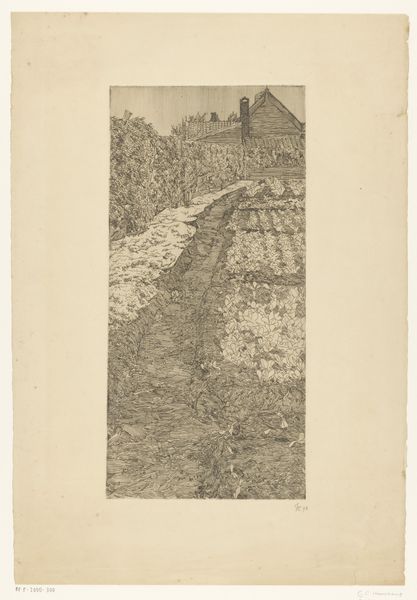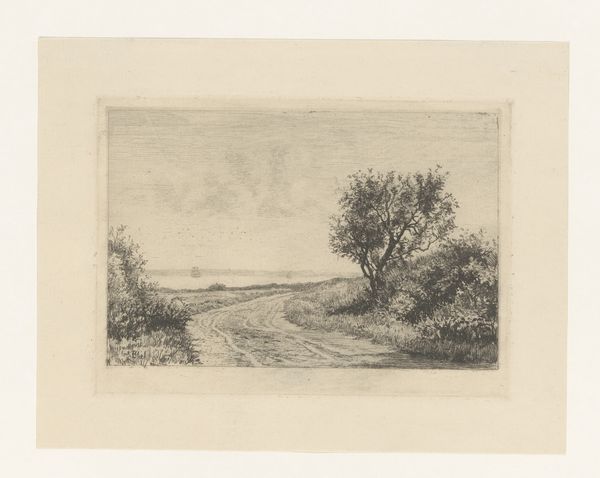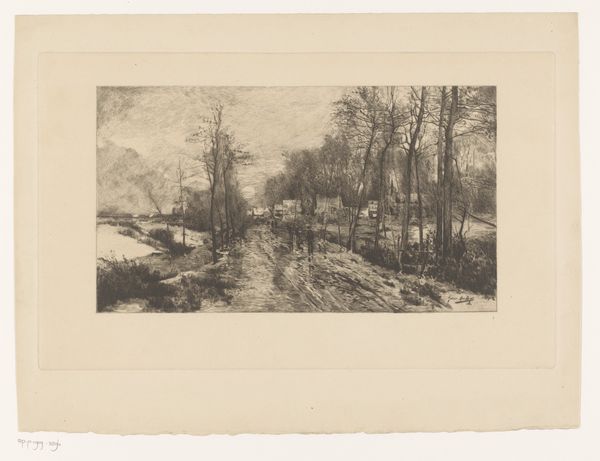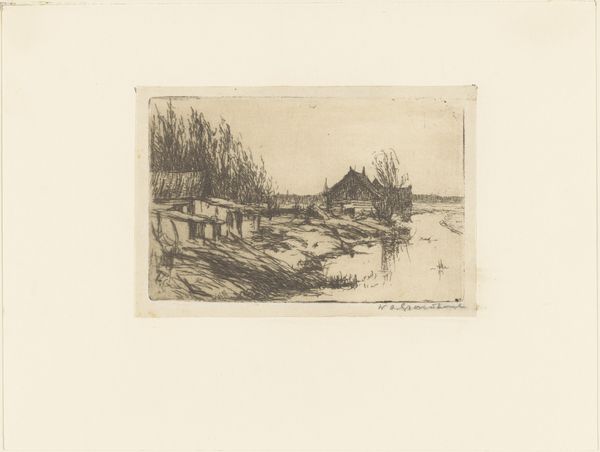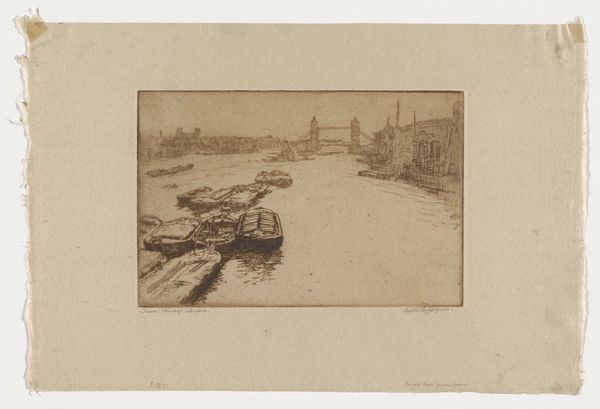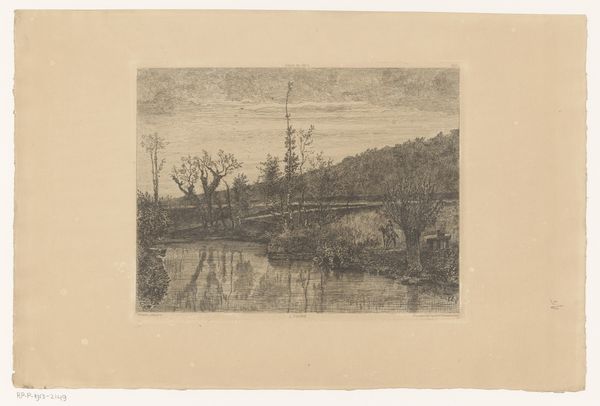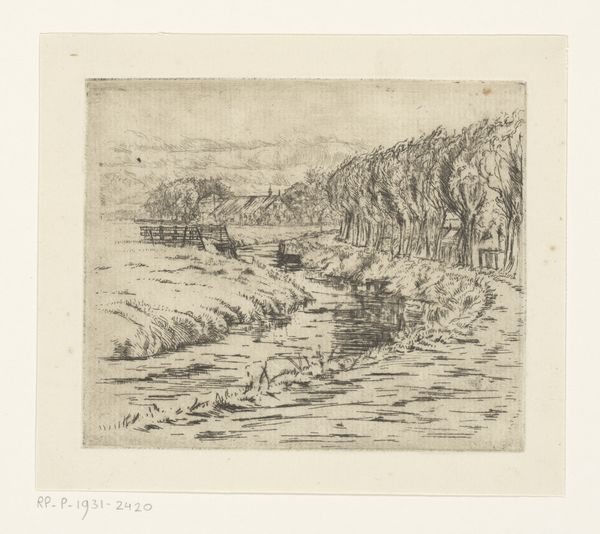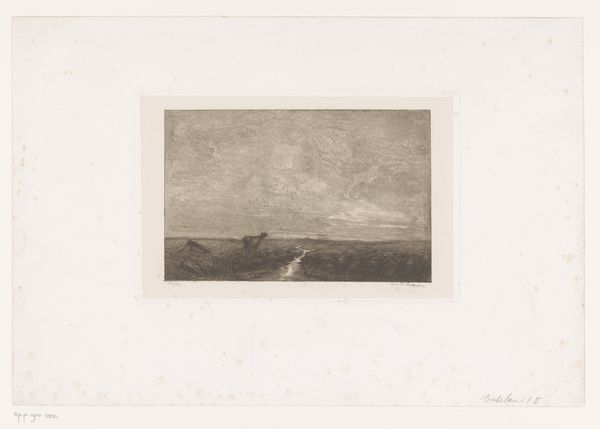
drawing, print, etching
#
drawing
# print
#
etching
#
landscape
#
etching
#
modernism
Dimensions: height 80 mm, width 85 mm
Copyright: Rijks Museum: Open Domain
Editor: This is Chris Lebeau's etching, "Kijkduin," created sometime between 1888 and 1945. I'm struck by the contrast between the delicate lines of the reeds and the broader strokes defining the distant hills. It has this rather quaint, old fashioned feel. What are your thoughts on the socio-cultural implications behind it? Curator: Well, seeing this through a historical lens, "Kijkduin" places itself within a crucial period of artistic and societal change. Consider that etchings and prints like these were widely accessible. Lebeau wasn’t just depicting a landscape, he was contributing to a visual culture. This modernistic portrayal becomes part of an ongoing narrative. It allowed more people to experience and perceive the world around them, forming or reinforcing the modern individual's connection to nature, as shaped by societal values of leisure and tourism. Do you notice anything specific about this connection as constructed by Lebeau? Editor: It feels deliberately composed, rather than a completely natural view, which may relate to a shift towards organized leisure and the creation of tourism? The flowing water suggests a deliberate control of the landscape... Curator: Exactly. Water management in the Netherlands has a long and complex history. Here the artist highlights managed landscape as something serene and enjoyable. Consider the social and economic developments of the time - expanding infrastructure, increased urbanization and what do you make of Lebeau framing nature so definitively within the human project? Editor: So the artwork does not present pure landscape; it rather represents cultural attitudes toward nature and its societal importance? It shows control as a desirable feature, reflecting a wider effort to tame our environment? I'd previously only thought of its visual appeal but thinking about society's perspective certainly is compelling. Curator: Precisely. Recognizing those viewpoints enriches the image for our appreciation of past and present contexts and perspectives.
Comments
No comments
Be the first to comment and join the conversation on the ultimate creative platform.
